When it comes to listening to Hi-Fi music at home, many sound system components come into play. Amplifiers are one of the key components found in a wide array of designs. The most challenging choice might be between a solid-state and tube amp.
Solid-state and tube amps can both deliver audiophile-grade, Hi-Fi sound quality. Tube amps give a warm, 3D sound that allows you to hear every instrument and vocals clearly. Solid-state amps are less expensive and provide a crisp, clean, and clear sound but may sound brittle at times.
Read on for more information about the distinctions between solid-state and tube amps and see which ones are better for an audiophile-quality sound system.
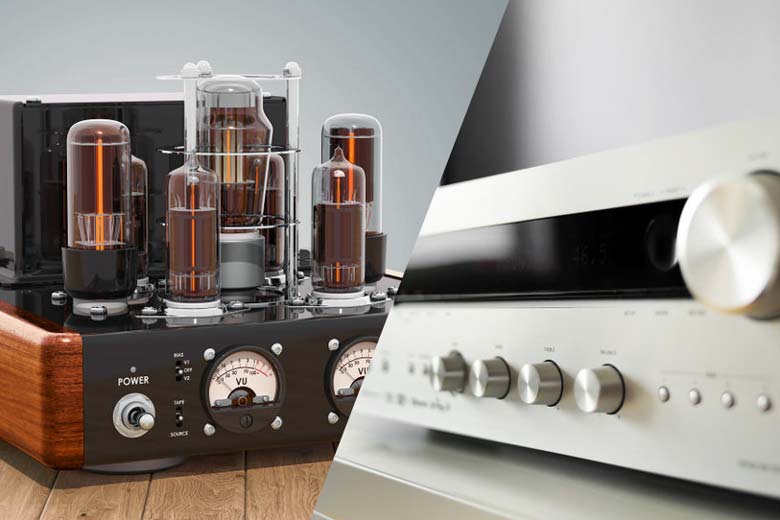
Tube Amps Explained
Tube amps are an old technology dating back to the early 1900s. You may wonder how they’re still prevalent in today’s digital world, where many high-end devices can do the job more efficiently.
Well, that’s not how it works in the world of audiophile music; new isn’t always better.

A tube amp consists of several vacuum glass tubes that contain different electrical components. Depending on the sound intended, these components may include:
- An anode
- A cathode
- A grid
- A heating element
- A plate
When you connect your music source to the tube amp, the sound signals get into the tube and create tiny voltages. The cathode is a metal element that gets heated when you turn on the tube amp and releases electrons, which have a negative electric charge.
They’re attracted to the anode with a positive charge, creating a movement of electrons and a magnetic field that boosts the voltage of the sound input.
The boosted voltage travels through different tubes and gets bigger (amplified) further to be fed to the speakers. That’s why these amplifiers have two groups of tubes: the preamp and power tubes.
The preamp tubes get the sound signals from the audio source and amplify it to a level acceptable by the power amps. Preamp tubes are mostly the triode type, containing three components: cathode, anode, and grid.
Also Read: Do Preamp Tubes Have To Match? What You Must Know
On the other hand, power tubes are larger and make the signals ready to be accepted by the speaker.
Of course, this explanation is very simplified as the process is more complex than that, and a tube amp contains many other components. For example, it has a transformer that turns the AC from the mains electricity into the DC required for the operation of the tube amp.
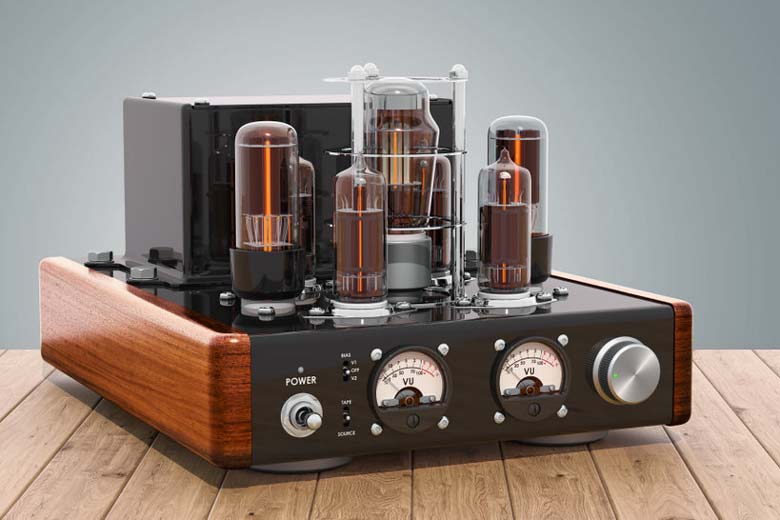
Tube Amp Pros
Tube amps are highly popular among audiophiles despite having a century-old technology that more recent devices would have replaced. Here are the main reasons for tube amps popularity:
Superb Sound Quality
The most important reason that keeps audiophiles loyal to tube amps is the warm and sweet sound that they get from tube amps. The “tubey” sound is so pleasant—being closest to what instruments sound in real life—that it covers every other disadvantage.
Many audiophiles believe that the sound quality that comes out of a tube amp is so immersive that you feel like you’re listening to the music live.
Versatile
Tube amps have been around for such a long time, so people have tried them with different music playing sources and music genres. Although initially designed for listening to vinyl, you can connect it to any sound source and get that dreamy sound everyone talks about.
In addition, it doesn’t matter which type of music you listen to; it works great for every kind of music, be it metal, rock, classic, etc. It’s particularly great for vocals and instruments.
Customizable
Although tube amps create signature warm sounds with desirable and soft clipping points, each tube amp can sound different. That’s because the glass tubes used in each amp can have a different design, and the tube combinations can produce various sound effects.
This feature makes tube amps suitable for different tastes, and hardcore tube fans can play around with varying combinations of tubes to find their ideal result.
This practice, known as tube rolling, is popular among audiophiles as a hobby; it allows them to customize the amp to their liking. You could also change the tubes to isolate some instruments and make them stand out.
Tube Amp Cons
Not Consistent Results
As mentioned, tube amps can sound different depending on the components used in their construction. Each manufacturer has a different definition of the “right” sound that may affect how they build and combine tubes in the amp.
That’s why the final result may not be compatible with your ideal music. As a result, you may have to try different tubes, and if you don’t use high-quality tubes, you may not even notice a difference.
While it can be a great hobby for you, tube rolling may be too much of a hassle if you prefer a more straightforward way of listening to high-fidelity music.
Maintenance
The construction of tube amps makes them prone to damages. So, you need to take care of them and make sure all tubes are in tip-top shape.
Tubes contain filaments, like lightbulbs, that can get damaged after prolonged use and need replacing.
Alternatively, the sound quality may deteriorate after extended use, even when there’s no physical damage.
However, it can’t be a deal-breaker since good-quality tube amps are long-lasting, and changing out tubes isn’t something you’ll have to do very often.
Most tube amp lovers take care of their equipment by regular visits to the tech shop and ensuring the tubes are in good shape. This way, they can lengthen the lifespan of their equipment and prevent damages.
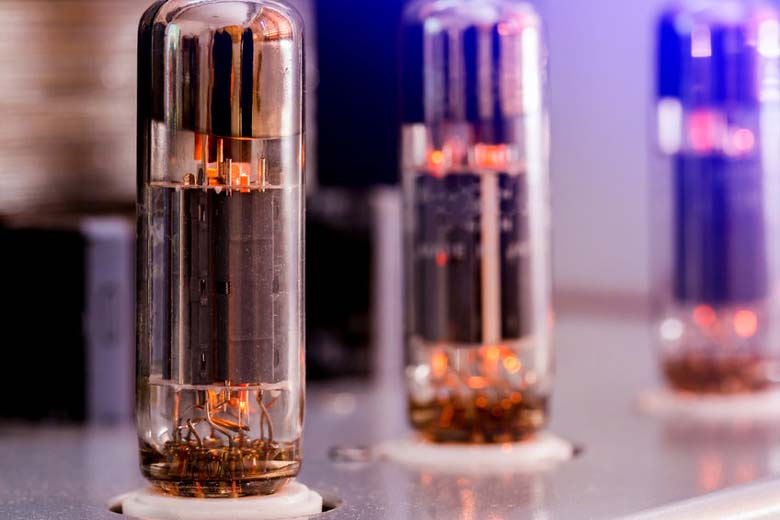
Take Long To Warm Up
Since tube amps rely on the heating element, it takes them time to get ready for playing music. That means before listening to music; you need to warm up the amplifier for about 20 minutes.
This warmup time may be a turnoff for many impatient audiophiles who want to listen to their music as soon as they feel like it.
Cost
Tube amps aren’t known for being the most affordable amplifiers. And if you get cheap tube amps, you most probably won’t get the desired result out of them because the amp’s quality depends on its price.
You should also add additional maintenance costs and the costs of changing broken tubes or getting new tubes if the ones already installed aren’t good enough for your taste.
Here are some other disadvantages of tube amps:
- More power consumption
- Higher heat generation
- Limited tonal range
- Heavy and difficult to handle
However, the sound quality that you get from a tube amp is so unique that many audiophiles consider these disadvantages minor and negligible.
For example, being heavy can be a negative point for guitar players who need to carry the amp around. But for your home audio system, it can’t be a problem because it’ll sit there all the time.
Audiophiles are also willing to pay any costs to feel like they’re listening to real instruments.
Solid-state Amplifiers Explained
Also known as transistor amps, solid-state amplifiers work differently from tube amps and produce different sounds. As the name suggests, a solid-state amp features a transistor instead of glass tubes, but they have the same function: boosting audio signals.

The device consists of three parts:
- An input driver circuit that takes the input signal and boosts it.
- Output transistors that feed the amplified signal and send it to the speaker.
- A transformer that turns AC from mains to DC low-voltage current.
The transistors are installed on a circuit board and emulate tubes’ work and can deliver the same results as tube amplifiers. Plus, there are preamp and power transistors, just like tubes, that boost the audio signal at different levels.
Related article: Can a Preamp Power Passive Speakers?
Although they may sound different from tube amplifiers, solid-state amps have come a long way, and digital technology produces similar results effectively.
Another difference between solid-state and tube amps is that the former doesn’t need a transformer for speakers. That’s because, unlike tube amps that work with voltage from sound input, solid-state amps work with current from the output device. Since voltage can’t drive speakers, tube amps need transformers.
Apart from technical differences, the sound quality matters to most audiophiles.
While tube amps often make the sound of music warm with good bass, the sound produced by solid-state amps is generally more flat and digital.
That’s because of the way they clip the sound waves. When music is played at high volumes, both devices clip the peaks of the sound waves. However, this clipping is round and gentle in tube amps, while it’s harsh and tough in solid-state amps.
But that does not mean that solid state amps are bad or always sound worse than a tube amp!
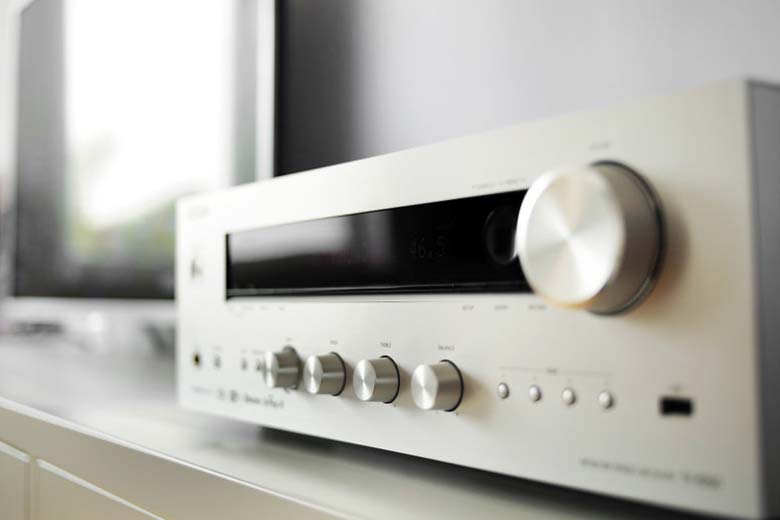
Pros of Solid-state Amps
Although they may sound inferior to some audiophiles, they have some plus sides that make them a preferred choice for most people. Here are the main ones:
Light and Low-maintenance
Since solid-state amps belong to the digital era, they contain fewer parts than their tube counterparts and weigh much less as a result. They’re also more reliable and need less maintenance because they don’t contain filaments or other fragile parts.
While tube amps can deteriorate in performance with time and use, that’s not the case with solid-state amps.
However, if a solid-state amp runs into a problem, it’s more difficult to diagnose and fix by replacing parts.
Solid-state amps are made of circuits and silicone, which are more durable than the fragile glass tubes used in tube amps. You can easily move them without being worried about breaking anything.
Less Expensive
The biggest advantage of solid-state amps over tube amps is that they’re much less expensive. That’s because tube amps have intricate designs that require long and tedious manual work to make them.
However, solid-state amps are simpler and can be mass-produced in factories. They’re readily available with different designs and various prices that fit every budget.
In addition, unlike tube amps that need to be high-quality to make a difference, a solid-state amp gets the job done almost regardless of the price.
Clean and Clear Output
While tube amps can create more detailed audio and a three-dimensional feel that makes you feel like you’re in a live concert, solid-state amps create clean audio reproduction. They don’t have any humming or noise and are great for low-signal sources like cartridges.
The distortion that tube amps create at low and mid ranges is desirable for guitar amps, but no one wants to listen to distorted music on their playback devices.
Cons of Solid-state Amps
Although solid-state amps can produce fast, crisp, and accurate sounds, they can come with some downsides like giving out digital-sounding and harsh audio. Here are a few other disadvantages:
Not Customizable
Solid-state amps don’t have anything like tubes that you can swap out for others to get your desired tone. Everything comes in a tightly-closed pack with fixed features.
So, if you think the music is harsh or fatiguing, you can’t do anything about that. Plus, you can’t see what’s inside and don’t know if anything needs repair or replacement.
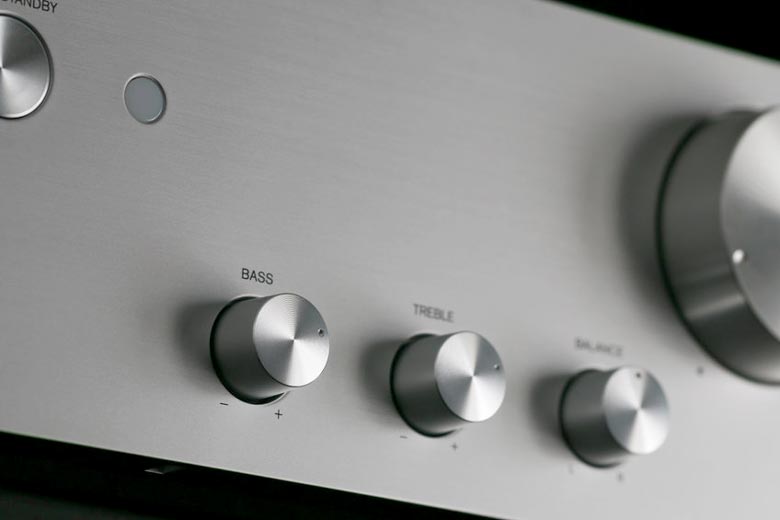
Too Clean Sounds
As mentioned above, an advantage of solid-state amps is that they create no distortion and produce a pristinely clean sound. The music is played as the musicians intended to hear without adding any sound coloration.
However, some audiophiles may consider this feature too much, to the point of sounding cold and characterless.
This feature has made classical and electronic music fans gravitate toward these amps, but eventually, it’s a personal preference and may not be a downside for many audiophiles.
Related article: Do Hi-Fi Amplifiers Sound Different?
Solid-state vs. Tube Amps: The Verdict
Both of these amps can give you a great listening experience depending on your needs, expectations from Hi-Fi music, and goals.
If you’re a beginner audiophile, on a budget, and don’t have enough time or expertise to maintain the amp, a solid-state type is better.
Tube amps are high-maintenance and can be even dangerous because they contain capacitors and bear voltages even when they’re off.
However, if you want the warm sound that everyone talks about, can afford the high price tag, and have enough patience to take care of your device, the tube amp is the way to go.
While the sound quality is subjective and may even depend on the music genre, you may want to go for a tube amp just because it looks cool. It gives your setup a vintage feel with tubes getting lit when they work, giving your setup that wow factor many audiophiles are looking for.
Eventually, you need to do a lot of research, listen to different devices, and weigh your options to see which one works better for you. You should know what each musical instrument sounds like in real life and choose the amp based on that to get the highest-fidelity sound.
Recommended article: Can an Amplifier Be Too Powerful for Speakers?
Plus, these days, amplifier manufacturers can build systems that sound so much like each other that even seasoned audiophiles can’t tell the difference. So, you may find your ideal amp at a budget price with a high quality regardless of the technology.
Another consideration is the other components of the sound system; they have to be compatible and complement each other.
Pay attention to the connectivity options and make sure you can easily connect your speaker and audio source to the amplifier.
Best Tube and Solid-state Amps
There’s a wide variety of amplifiers for your home sound systems, and you should choose your desired one based on your preferences. It’s better to listen to them and see how they feel before purchasing.
However, the following affordable—but really great— picks on Amazon.com can give you an idea of what to look for:

Willsenton R8
This handmade tube amp features two pairs of 6SN7 and 6SL7 tubes and can be used for headphones, too. While the default tubes are KT88, you can also use the amp with EL34 and 6550.
It also features a triode and ultra-linear design, which you can switch by pushing a button. You can use its remote control, and it features a special power transformer exclusively made for this model.
Its high price tag may be its main disadvantage, although it’s excellent value for money given the features, sound quality, and the fact that it’s handmade.
YAMAHA A-S501BL

This Yamaha solid-state amp is one of the best amplifiers on the market, with a wide array of features. This one also has a custom-made power transformer delivering crystal clear sounds with great punch.
It’s easy to set up, affordable, and great for all music genres. You can connect it to a wide array of music sources, including your smartphone delivering an impressive sound. It has digital and analog audio inputs for TV, phono, and even Blu-ray players and features a Pure Direct mode to give you an even purer sound.
Final Thoughts
The choice between tube amps and solid-state amps depends on what kind of sound quality you want. If you prefer a warm, sweet sound and feel like you’re listening to the actual instruments, a tube amplifier is the way to go.
However, if you listen to classical or electric music and look for a clean and crisp sound, solid-state amps are the better choice. They’re also low-maintenance and more affordable, making them great for beginners.